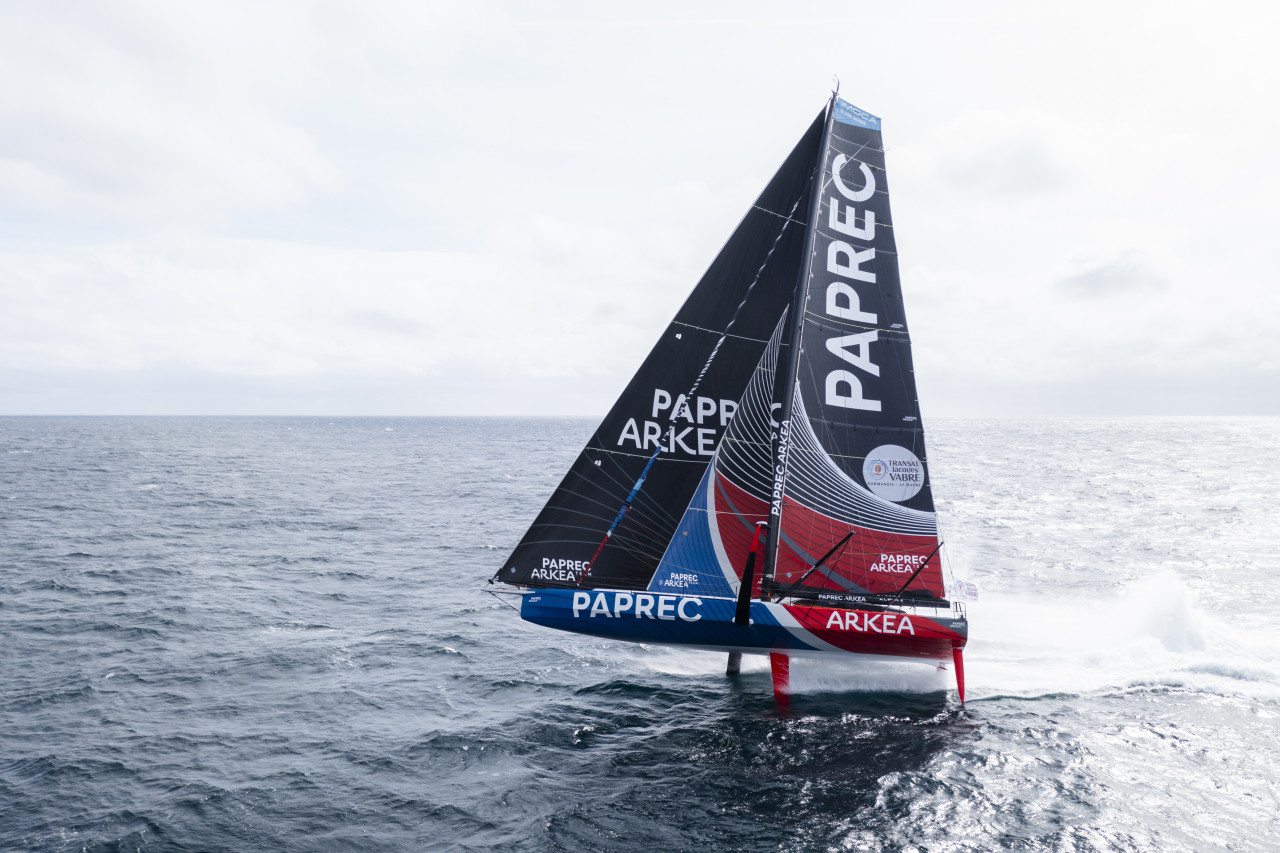11th Hour boat build details finally revealed
11th Hour Racing Team is one step closer in our ambition to win The Ocean Race 2022-23 with the announcement of the design and build of a brand new IMOCA 60 taking place in Brittany, France.
•••Built with composite materials, IMOCA monohulls are designed to be both as light as possible to gain speed and strong enough to withstand the worst conditions that ocean navigation can impose, especially during the Vendée Globe.
These 60-footers really came into being in 1986, during the second edition of the BOC Challenge where five monohulls were reasonably proportioned at 18.28 metres (60 feet). Even back then, the most modern monohulls were already displaying the characteristics of boats designed for the downwind conditions of the Southern Ocean, namely a wide beam and a long waterline.
A few years later, in 1998, canting keels designed to increase the righting moment became the norm and computer systems became increasingly important for retrieving weather forecasts and communicating with land. Essential for singlehanded sailing, autopilots also gradually became more and more 'intelligent'.
Hulls and sail plans have also evolved, with boats becoming more powerful and featuring wider sterns and improved performance upwind. Cockpits have also become increasingly well protected, some boats even sporting sliding roof cuddies to protect the manoeuvring area.
The safety requirements imposed by the IMOCA class on both sailors and naval architects have contributed a great deal to the boat’s success. Since 2000, these monohulls have had to prove before a race start that they’re able to right themselves without outside assistance and guarantee they are watertight inside as well as extremely buoyant in the event of capsizing or water ingress.
With a minimum of twenty boats at the start of the Vendée Globe since 2000, today IMOCA is the biggest offshore class in the world. Consequently, the history of IMOCA and that of the Vendée Globe are one and the same.
 © Marin Le Roux - polaRYSE / Paprec Arkea
© Marin Le Roux - polaRYSE / Paprec Arkea
Midway through the noughties, foils put in an appearance on the America's Cup multihulls and then very quickly began to grace some of the IMOCA monohulls. These lifting surfaces shaped like Dali moustaches enable the boat to 'plane', skimming over the surface of the water and thus limiting the water resistance and enabling the boat to accelerate quickly. In 2016, six foilers tool the start of the Vendée Globe. Four years later, there were 19.
Since then, the class has opened up the measurement regarding how to trim the foils. As such, they have greater freedom of movement (up and down & fore and aft), stimulating the architects’ creativity all the more.
11th Hour Racing Team is one step closer in our ambition to win The Ocean Race 2022-23 with the announcement of the design and build of a brand new IMOCA 60 taking place in Brittany, France.
•••The IMOCA Class meeting marking the end of the summer holidays was held on Thursday 27th August using virtual technology. This meeting enabled the members of the Class to carry out an early appraisal of what has happened…
•••The IMOCA class has laid down many different precise criteria (which can evolve) in order to improve the safety of the sailors and to ensure that the contest is fair…
•••